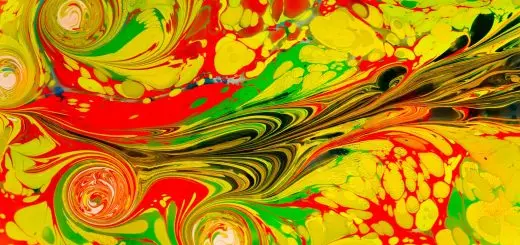Can Pets Recognize Themselves in Mirrors?

Looking for more amazing products? Check out our online store and explore our collection here! Happy shopping!
Before diving in, please note: This post is for informational purposes only. If you’d like to know more about how we approach topics, feel free to check out our friendly Disclaimer Page.
Hey there, amazing readers! 
We’re committed to delivering quality posts, and your support (even just sticking around despite the ads) means everything to us. So, bear with us, and thanks for helping us keep the good vibes rolling. Now, on to the fun stuff!
TRANSLATE BUTTON AT THE END OF THE ARTICLE
A Quick Overview
Have you ever caught your pet staring into a mirror, tilting their head in confusion?
It can be a funny sight, and as a pet owner, I often wonder: Can pets really recognize themselves in mirrors?
The concept of self-recognition is fascinating and has been explored in various scientific studies.
While humans can easily identify themselves in reflective surfaces, the same isn’t true for all animals.
Let’s jump into the world of self-recognition among pets and see what the research reveals!
Can Pets Really Recognize Themselves in Mirrors?
The short answer is, not all pets can recognize their own reflections.
Self-recognition in mirrors is a complex cognitive skill that varies widely across species.
Some animals, like humans and certain primates, pass the self-recognition test with flying colors.
However, the majority of pets, such as dogs and cats, tend to react to their reflections as if they are looking at another animal.
When my dog, Max, sees himself in the mirror, he often barks and tries to play with his "new friend." This playful reaction shows that he perceives the reflection as a separate entity rather than himself.
Meanwhile, my cat, Luna, usually seems indifferent, often swatting at her image before losing interest altogether.
This leads us to ponder the intricacies of how different pets perceive themselves and their surroundings.
The Science Behind Self-Recognition in Animals
Self-recognition is more than just a cute quirk in pets; it’s a marker of cognitive ability.
It involves several mental processes, including memory, awareness, and social cues.
Researchers believe this skill is tied to the animal’s overall intelligence and environment.
For instance, self-recognition is linked to an animal’s ability to reflect on its own experiences.
Animals that have a higher degree of social interaction and complex environments tend to develop better self-awareness.
This is why species like dolphins, elephants, and some birds can recognize themselves in mirrors.
They live in dynamic groups and have intricate social structures, helping them develop a sense of individuality.
As we consider our pets, it’s essential to note that self-recognition doesn’t equate to intelligence alone.
It’s also about how they engage with their environment.
While Max might not recognize himself, he’s smart in other ways—protecting the house and showing affection are just a couple of his strengths.
Understanding the Mirror Test: A Brief Overview
The mirror test, developed by psychologist Gordon Gallup Jr. in 1970, examines an animal’s ability to recognize itself in a reflection.
The test is relatively simple: a mark is placed on the animal in a spot it cannot see without a mirror.
If the animal uses the mirror to investigate and attempt to remove the mark, it demonstrates self-recognition.
This test has been used for decades to assess cognitive abilities in various species.
However, it has its critics.
Some argue that not all animals rely on visual cues as humans do.
Animals like dogs may depend more on other senses, such as smell and hearing, rather than sight.
Discover "Dog Care: Learning How to Care for Your Furry Friend
"
This leads to the conclusion that the mirror test may not be a definitive measure of self-awareness for all species.
Which Animals Pass the Mirror Test?
A handful of species can successfully pass the mirror test, showcasing their self-recognition ability.
These include:
Great Apes: Chimpanzees, bonobos, and orangutans often show awareness of their reflections, using mirrors to explore their appearances.
Dolphins: Known for their intelligence, dolphins can recognize themselves, demonstrating self-awareness in aquatic environments.
Elephants: These gentle giants also pass the test, using mirrors to check their bodies and even investigate marks.
Magpies: These birds are surprisingly intelligent and have shown self-recognition in various studies.
On the flip side, animals like dogs and cats do not pass this test, which raises interesting questions about their cognitive abilities and awareness.
Do Dogs Understand Mirrors Like Humans Do?
Dogs perceive mirrors quite differently than we do.
While they may not recognize themselves, they are still aware of their surroundings.
When my dog Max sees his reflection, he often reacts as if he is meeting another dog.
He may bark, wag his tail, or even attempt to play.
This behavior indicates that he is genuinely excited but not necessarily aware that the reflection is him.
Dogs rely heavily on their sense of smell, which is far more developed than their vision.
This means that even if they see another dog in the mirror, they might not connect the image with their own identity since they can’t smell that reflection.
In their eyes, it’s another animal, not a reflection of themselves.
We shouldn’t underestimate the intelligence of dogs, though.
They have distinct personalities and complex emotional lives, even if they don’t grasp the concept of a mirror.
Feline Reflections: What Cats Think of Mirrors
Similar to dogs, cats also have a unique relationship with mirrors.
Cats are often more curious and cautious than dogs when they encounter their reflection.
My cat Luna, for instance, will initially inspect the mirror intensely, sometimes pawing at it or sniffing nearby.
However, she usually loses interest quickly.
Cats tend to rely on their senses of smell and hearing more than their vision, so they might see their reflection as just another cat without recognizing it as themselves.
The lack of response to their reflection might suggest they do not perceive it as a significant aspect of their environment.
Interestingly, some cats do appear to understand mirrors better than others.
Those with more exposure to mirrors may show different behaviors.
But in general, it seems that most cats remain blissfully unaware that the mysterious creature in the glass is, in fact, them.
The Curious Case of Birds and Self-Recognition
Birds, particularly some intelligent species like magpies and parrots, can show signs of self-recognition.
Studies have shown that magpies can recognize themselves in mirrors, indicating a level of self-awareness that aligns with some mammals.
This raises fascinating questions about the cognitive abilities of avian species, as they navigate their environments with a mix of intelligence and instinct.
Many birds possess remarkable problem-solving skills and social behaviors.
Parrots, for example, can mimic human speech and learn commands, suggesting a form of awareness and understanding.
This means that, like our furry friends, birds are complex creatures with their own ways of interpreting the world around them.
I often find myself captivated by how my parakeets react to their reflections.
They’ll often chatter and tilt their heads, seemingly intrigued by the “other bird.” While they may not fully comprehend their reflection, it’s clear they engage with it in a way that entertains them.
Do Other Pets, Like Rabbits, React to Mirrors?
Rabbits and other small pets also exhibit curious behavior around mirrors.
While they may not pass the self-recognition test, they often display interesting reactions.
When my rabbit, Thumper, encounters a mirror, he often thumps his feet as if alerting me to a potential intruder.
This behavior indicates that he perceives the reflection as something to be wary of rather than recognizing it as himself.
Small pets like hamsters and guinea pigs typically react in similar ways.
They may approach the mirror with curiosity, but their responses vary.
Unlike dogs or cats, their interactions are more instinctive than cognitive.
They might see their reflection as a potential threat or a companion, but understanding their own identity remains outside their comprehension.
How Learning and Environment Affect Recognition
An animal’s ability to recognize itself may hinge on its upbringing and environment.
Pets raised in stimulating environments that encourage exploration and interaction with various stimuli are more likely to develop cognitive skills, including self-awareness.
For instance, social animals that live in groups, like elephants, tend to develop more complex social behaviors and self-recognition.
In contrast, solitary animals or those in less stimulating environments may lack the opportunities to engage in self-reflection.
As pet owners, we can cultivate environments that challenge our pets and encourage cognitive development.
Providing toys, social interactions, and new experiences can enhance their learning and understanding of themselves and their surroundings.
Fun Experiments to Test Your Pet’s Mirror Skills
If you’re curious about your pet’s reaction to mirrors, there are simple and fun experiments to try:
The Mark Test: Place a small dot on your pet’s forehead when they’re unaware.
Use a mirror to see if they try to investigate or remove the mark.
Mirror Play: Set up a mirror at your pet’s eye level and observe their reactions over several days.
Do they become more curious or indifferent?
Record Reactions: Video your pet’s interactions with the mirror.
Watching their behavior can be both entertaining and enlightening.
These experiments can help you understand how your pet perceives their reflection and engage with them creatively.
Tips for Helping Your Pet Understand Their Reflection
While pets may not fully grasp the concept of self-recognition, we can help them feel more comfortable with mirrors.
Here are some tips:
Positive Reinforcement: Reward your pet with treats and praise when they show interest in the mirror.
Gradual Introduction: Allow pets to explore the mirror at their own pace.
Don’t force them to interact if they seem scared.
Interactive Play: Use toys or treats to engage your pet while they’re near the mirror.
This can help them associate the mirror with positive experiences.
These strategies can help foster a better understanding of their environment, and who knows, they might just become a little less perplexed by their reflection!
Conclusion: What This Means for Pet Owners Today
Understanding how our pets perceive themselves can deepen our connection with them.
While many pets may not recognize their reflections, they still possess rich personalities and emotional lives.
As pet owners, we should focus on providing stimulating environments that enhance their cognitive development, regardless of their self-recognition abilities.
Whether it’s through play, exploration, or positive reinforcement, we can help our pets thrive.
So, the next time you catch your furry or feathered friend staring at their own reflection, remember: it might be just another day in the life of your extraordinary pet!

The Enlightenment Journey is a remarkable collection of writings authored by a distinguished group of experts in the fields of spirituality, new age, and esoteric knowledge.
This anthology features a diverse assembly of well-experienced authors who bring their profound insights and credible perspectives to the forefront.
Each contributor possesses a wealth of knowledge and wisdom, making them authorities in their respective domains.
Together, they offer readers a transformative journey into the realms of spiritual growth, self-discovery, and esoteric enlightenment.
The Enlightenment Journey is a testament to the collective expertise of these luminaries, providing readers with a rich tapestry of ideas and information to illuminate their spiritual path.
Our Diverse Expertise
While our primary focus is on spirituality and esotericism, we are equally passionate about exploring a wide range of other topics and niches 

To ensure we provide the most accurate and valuable insights, we collaborate with trusted experts in their respective domains 
Our blog originally focused on spirituality and metaphysics, but we’ve since expanded to cover a wide range of niches. Don’t worry—we continue to publish a lot of articles on spirituality! Frequently visit our blog to explore our diverse content and stay tuned for more insightful reads.
Hey there, amazing reader! 
Check out our store here and take a peek at some of our featured products below! Thanks for being awesome!











